Capel and Faust basins—integrated geoscientific assessment of Australia’s remote offshore eastern frontier
Takehiko Hashimoto A , Karen Higgins B , Ron Hackney B , Vaughan Stagpoole C , Chris Uruski C , Nadege Rollet B , George Bernardel B , Graham Logan B and Rupert Sutherland CA Petroleum and Marine Division, Geoscience Australia GPO Box 378 Canberra ACT 2601 Australia
B Geoscience Australia GPO Box 378 Canberra ACT 2601
C GNS Science PO Box 30368 Lower Hutt 5040 New Zealand
The APPEA Journal 49(2) 586-586 https://doi.org/10.1071/AJ08059
Published: 2009
Abstract
The paper discusses the results from the GA–302 2D seismic survey and GA–2436 (RV Tangaroa) marine reconnaissance survey over the Capel and Faust basins in the northern Tasman Sea. The integration of seismic, potential field and bathymetric data sets in 3D space at an early stage in the project workflow has assisted in the visualisation of the basin architecture, the interpolation of data between the seismic lines and the iterative refinement of interpretations. The data sets confirm the presence of multiple depocentres previously interpreted from satellite gravity data with a maximum sediment thickness of 5–7 km. Preliminary interpretation of the seismic data has identified two predominantly Cretaceous syn-rift and two Upper Cretaceous to Neogene sag megasequences overlying a heterogeneous pre-rift basement. The comparison of seismic facies and tectonostratigraphic history with offshore New Zealand and eastern Australian basins suggests the presence of possible Jurassic to Upper Cretaceous coaly and lacustrine source rocks in the pre-rift and syn-rift, and fluvio-deltaic to shallow marine reservoir rocks in the syn-rift to early post-rift successions. Preliminary 1D basin modelling suggests that the deeper depocentres of the Capel and Faust basins are within the oil and gas windows. Large potential stratigraphic and structural traps are also present.
keywords: Capel Basin, Faust Basin, Lord Howe Rise, Tasman Sea, rift basin, Cretaceous, deep-water frontier, petroleum prospectivity, stratigraphy, structural geology, seismic survey, gravity
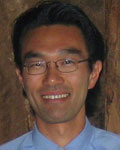
Takehiko (Riko) Hashimoto is a basin analyst at Geoscience Australia’s petroleum and marine division. He is currently examining the basin architecture and evolution of the deepwater Capel and Faust basins, eastern Australia, as part of the Australian Government’s Energy Security Program. He has a background in stratigraphy, sedimentology and geomorphology, and holds a BSc (Hons) and PhD from the University of Sydney. He has experience in the Palaeozoic and Mesozoic onshore basins and the Quaternary depositional systems of southeastern Australia through previous work at the New South Wales Department of Primary Industries and in consultancies. Member: PESA, ACT Branch. riko.hashimoto@ga.gov.au |
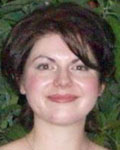
Karen Higgins works within the eastern frontiers group (petroleum prospectivity and promotions group) as a geologist at Geoscience Australia. She received a BSc (Hons) in geology from the Australian National University, Canberra, in 2002. Member: PESA karen.higgins@ga.gov.au |

Ron Hackney graduated from the Australian National University with a BSc (Hons) in 1993. He completed an MSc at Victoria University of Wellington, New Zealand, in 1995 and a PhD at the University of Western Australia in 2001. This was followed by a postdoctorate at the Free University of Berlin and a Junior Professorship at the University of Kiel. Ron returned to Australia in 2008 to join the marine and petroleum division of Geoscience Australia as a potential-field geophysicist. In addition to his current work on Tasman Sea basins, Ron has worked on subduction-zone processes, rift-flank uplift in Antarctica and crustal structure in Western Australia. ron.hackney@ga.gov.au |

Vaughan Stagpoole is the oceans exploration section manager at GNS Science in Wellington. He is a geophysicist that specialises in research on the formation and development of sedimentary basins and basin modelling. Recently he has been heavily involved in the assessment of the prospectivity of New Zealand's frontier sedimentary basins and the New Zealand Law of the Sea project. Vaughan has a PhD degree from Victoria University of Wellington. v.stagpoole@gns.cri.nz |
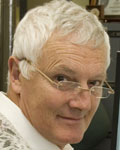
Chris Uruski currently leads the Frontier Basins Project for GNS Science. He graduated in geology from the University College of Wales, Aberystwyth, in 1974. He then spent a short time in the Royal Navy. Chris spent the next ten years as a marine geologist and geophysicist, first at Aberystwyth, then Durham university and then became a consultant in the oil industry before moving to New Zealand in 1987. Since then he has been employed as a seismic interpreter at the New Zealand Geological Survey, now GNS Science. He has a particular interest in deepwater basins and believes that the deepwater regions around New Zealand may contain large quantities of hydrocarbons which may sustain New Zealand as a net oil exporter for many years to come. C.Uruski@gns.cri.nz |
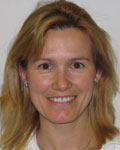
Nadege Rollet is a research scientist at Geoscience Australia. She obtained a MSc and a PhD in geology and geophysics from the University of Paris (Pierre et Marie Curie) in 1995 and 1999 respectively. Her studies are focused on geodynamic reconstructions and structural framework of the south and southeast Australian margins and on the detection and characterisation of natural hydrocarbon seepage on the north and northwest Australian margin. She is currently working on the Remote Eastern Frontiers project within petroleum and marine division at Geoscience Australia. nadege.rollet@ga.gov.au |
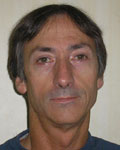
George Bernardel obtained a BSc (Hons) in geophysics from the University of Sydney in 1986 and a BEng in computer systems from the University of Southern Queensland in 2004. George is a geoscientist at Geoscience Australia, with 15 years experience in seismic acquisition and processing, seismic interpretation and Law of the Sea technical analyses. George has recently been involved in geological studies of the northern Lord Howe Rise and seismic data acquisition along the western Australian margin. George.Bernardel@ga.gov.au |
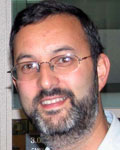
Graham Logan obtained a BSc (Hons) in geology from University of Glasgow in 1988 and a PhD in organic geochemistry from the University of Bristol in 1992. He worked at Indiana University and CSIRO Petroleum before joining Geoscience Australia in 1997. He is project leader of the Remote Eastern Frontiers Project within the petroleum and marine division of Geoscience Australia. Graham has published over 50 papers and is an associate editor for Geochemica et Cosmochimica Acta. Member: the Geochemical Society. Graham.Logan@ga.gov.au |
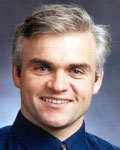
Rupert Sutherland is a principal scientist at GNS Science, where he leads the impacts of plate tectonics in and around New Zealand research group. He has published over 50 papers about the tectonic development and active tectonics of the southwest Pacific, Australia, and Antarctica. r.sutherland@gns.cri.nz |
References
Gaina, C., Müller, D.R., Royer, J-Y., Stock, J., Hardebeck, J., and Symonds, P. (1998). The tectonic history of the Tasman Sea: a puzzle with 13 pieces Journal of Geophysical Research 103, 12413–33.Norvick, M.S., Smith, M.A. And Power, M.R., 2001—The plate tectonic evolution of eastern Australasia guided by the stratigraphy of the Gippsland Basin. In: Hill, K.C. and Bernecker, T. (eds), Eastern Australasian Basins Symposium: a refocused energy perspective for the future. Petroleum Exploration Society of Australia Special Publication, 15–24.
Norvick, M.S., Langford, R.P., Hashimoto, T., Rollet, N., Higgins, K.L. And Morse, M.P., 2008—New insights into the evolution of the Lord Howe Rise (Capel and Faust basins), offshore eastern Australia, from terrane and geophysical data analysis. In: Blevin, J.E., Bradshaw, B.E. and Uruski, C. (eds), Eastern Australasian Basins Symposium III: Energy security for the 21st century, Petroleum Exploration Society of Australia Special Publication, 291–310.
Uruski, C.I., Baillie, P., and Stagpoole, V. (2003). Development of the Taranaki Basin and comparisons with the Gippsland Basin: Implications for deepwater exploration. The APPEA Journal 43, 185–96.
Willcox, J.B., Sayers, J., Stagg, H.M.J. and Van De Beuque, S., 2001—Geological framework of the Lord Howe Rise and adjacent oceanic basins. In: Hill, K.C. and Bernecker, T. (eds), Eastern Australasian Basins Symposium: a refocused energy perspective for the future, Petroleum Exploration Society of Australia Special Publication, 211–25.


